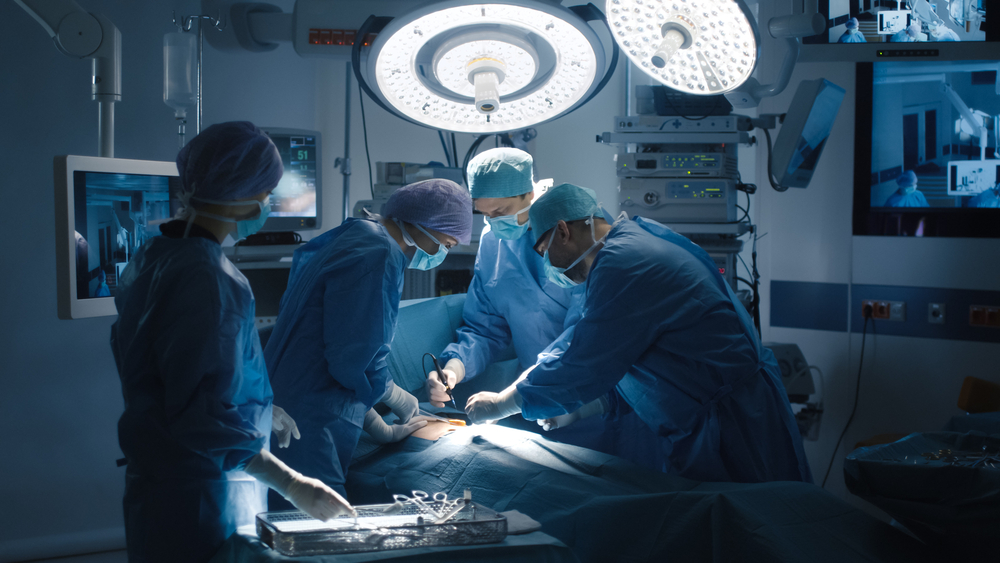bolu escortçanakkale escortbayburt escortdüzce escortaydın escortdenizli escorthakkari escortbingöl escortgümüşhane escortantalya escortbartın escortbilecik escortçankırı escortamasya escortelazığ escortbatman escortartvin escortbursa escortçorum escortbalıkesir escortburdur escortaksaray escortankara escortbitlis escortadıyaman escortağrı escorterzincan escortafyon escortdiyarbakır escortığdır escorthatay escortgiresun escorteskişehir escortadana escortardahan escortedirne escorterzurum escortgaziantep escortkilis escortizmir escortmanisa escortkastamonu escortkahramanmaraş escortistanbul escortkars escortkaraman escortmuş escortısparta escortsinop escortmardin escortkocaeli escortkonya escortkırklareli escortmuğla escortordu escortosmaniye escortmalatya escortkırıkkale escortkayseri escortvan escortsamsun escortmersin escortnevşehir escortsakarya escortkırşehir escortkarabük escortkütahya escortyalova escortniğde escortkıbrıs escortşırnak escortuşak escortrize escorturfa escortsivas escortsiirt escorttrabzon escorttokat escorttekirdağ escorttunceli escortzonguldak escortyozgat escortside escortşehitkamil escortşahinbey escortesenyurt escortçankaya escortkeçiören escortmecidiyeköy escortgüneşli escortpendik escortküçükçekmece escortyenimahalle escortbakırköy escortaltınordu escortserik escorttaksim escortsilivri escortkadriye escortmezitli escortsüleymanpaşa escortbostancı escortdarıca escortkonyaaltı escortsarıçam escortbahçeşehir escortiskenderun escortkepez escortseyhan escortosmangazi escortbağcılar escortselçuklu escortgaziosmanpaşa escortmamak escortkuşadası escortkarabağlar escortsancaktepe escortbaşakşehir escortgörükle escortetimesgut escortkayapınar escortavcılar escortbahçelievler escortmelikgazi escortmaltepe escortbosna escortdidim escortkemer escortbelek escortfethiye escortyıldırım escortataköy escortaltıparmak escortsultangazi escortbornova escortbuca escortüsküdar escortgebze escortmuratpaşa escortkartal escortkadıköy escortnilüfer escortsincan escortkagithane escortkocasinan escortesenler escortodunpazarı escortsultanbeyli escortataşehir escortonikişubat escortaltındağ escortsarıyer escortbeylikdüzü escortkonak escorteyüp escortkaraköprü escortbağlar escortyüreğir escortizmit escorteyyubiye escorttepebaşı escortinegöl escortkaratay escorthaliliye escortfatih escortçukurova escortmeram escortkarşıyaka escortalanya escortpamukkale escortarnavutköy escorttarsus escortilkadım escortyunusemre escortipekyolu escorttuzla escortakdeniz escortantakya escortçekmeköy escorttoroslar escortmerkezefendi escortbayraklı escortşişli escortçorlu escortefeler escortortahisar escortbüyükçekmece escortyeşilyurt escortadapazarı escortzeytinburnu escortsiverek escortmanavgat escortbayrampaşa escortgüngören escortbattalgazi escortkızıltepe escortbeykoz escortmarmaris escortatakum escortizmit escortСмотреть русское порно в HD качествеBeylikdüzü escorthd porn videosrujizz.medesi porn videospornhdvideos.lifeAnkara bayan escortHindi sex tvbeylikdüzü escortsigara satın al,puro satın al,tütün satın al,pipo tütünü satın al520 kalpli sigaracaptain black sigara,captain black sigara satın alCavallo Sigaramilano sigaradavidoff sigaradjarum black sigaradunhill sigaramarlboro sigaravogue sigaraLucky Strike Sigarakentsticks sigarasenator sigaraesse sigaraWinston Sigaramarvel sigaraneo sigaraKarelia SigaraParliament Sigarakent sigarakeno club sigaranuo sigaraal capone sigaraamerican spirit tütünmarlboro tütün satın aldrum tütün satın alGeorge Karelias And Sons tütün satın alGolden Virginia Tütün satın alharvest tütün satın alMac Baren Tütün satın alRothmans Tütün satın alOld Holborn Tütün satın alPueblo Tütün satın alraw tütün satın alithal tütün satın alyerli tütün satın alAmsterdam Rolling Special Yellow TütünAbsinthe Apsinthion Yeşil PeriCapstan Pipo Tütünü satın alAmphora Pipo Tütünü satın alcaptain black pipo tütünü satın aldavidoff pipo tütünü satın alMac Baren Pipo Tütünü satın alRattrays Pipo Tütünü satın alW O Larsen Pipo Tütünü satın alReiner Pipo Tütünü satın alpipo tütünüsarma tütün satın alpuro satın alMarlboro Double Fusion SigaraMarlboro Double Fusion Summer karpuzlu sigaraMarlboro Double Ice Sigara Mentol ve Nane AromalıMarlboro Double Mix SigaraMarlboro Edge Less Smell Slim SigaraMarlboro Edge Sunset SigaraMarlboro Exotic Shuffle SigaraMarlboro Gold SigaraMarlboro ice Blast Sigara mentollüMarlboro Lights SigaraMarlboro Luna Shuffle SigaraMarlboro Red Kırmızı Classic Sigaramarlboro shufflemarlboro sol shufflemarlboro touch aquamarlboro touch graymarlboro vista double fusion purple sigaramarlboro vista blossom fusion sigaramarlboro vista double fusion summermarlboro vista exotic fusion sigaramarlboro winter shufflemarlboro vista red fusion sigaracaptain black blue compact sigaracaptain black cherise sigara vişne aromalıcaptain black sigaracaptain black dark crema sigaracaptain black mentollü sigaracaptain black navy blue sigaracaptain black peach sigara şeftali aromalıoscar çikolatalı sigaraOscar Nano Silver SigaraOscar Ice Gold SuperSlim SigaraOris Vintage Club Vanilla SlimOris Vintage Club Chocolate Slim SigaraOris Vintage Club Cherry SlimOris Twin Sense Strawberry sigaraOris Twin Sense Spearmint SigaraOris Twin Sense Blueberry SigaraOris Tropical Dew SigaraOris Swiss Presso SigaraOris Strawberry Superslims SigaraOris Spearmint SigaraOris Smart Change Purple SigaraOris Smart Change Mentollü SigaraOris Pulse Super Slim Fusion MintOris Pulse Mentol Orange SuperSlims Sigara Portakal AromalıOris Pulse Mango Mint Superslim SigaraOris Pulse Gum Mint SigaraOris Pulse Blueberry Blast Superslim SigaraOris Pulse Apple Mint SigaraOris intense Summer Fizz SigaraOris Intense Purple Fizz SigaraOris Double Apple SigaraOris Cherry Sigara Kiraz AromalıTekel 3000 Night BlueTekel 2001 SigaraTekel 2000 SigaraSobranie Cocktail Renkli SigaraSobranie Black Russian SigaraZümerret SigaraZumerret Mojito sigaraZumerret Mango sigaraZumerret Blueberry SigaraZumerret Blueberry Spearmint SigaraZumerret Applemint sigaravigor sigaraviceroy sigaraSheri Menthol Slim SigaraSheri Double Apple Slim SigaraRothmans SigaraRockets Sigara Paket 40 DalRobin Bubblegum Mint SigaraRobin Applemint SigaraPhilip Morris Blue Caps SigaraPlatinum Seven Slims Double ApplePlatinum Seven Strawberry SlimsPall Mall SigaraPall Mall Nano Switch Superslim SigaraAl Capone Sweet Cognac SigaraAl Capone Sunset SigaraAl Capone Red Pockets SigaraAl Capone Irish Coffee SigaraAl Capone Green Sigara MentollüAl Capone Gold Pockets SigaraAl Capone Flame SigaraAl Capone Filter Pockets Sigarilloharvest puroMilano Eject Double ClickHarvest Blueberry Crush SigaraHarvest Menthol Crush SigaraHarvest Superslim Coconut SigaraHarvest Superslim Menthol SigaraHarvest Superslim Original SigaraHarvest Superslim Sweet Cherry SigaraHarvest Superslim Sweet Coffe SigaraHarvest Superslim Vanilla SigaraHarvest Sweet Cherry SigaraHarvest Sweet Coffe SigaraHarvest Sweet Original Little SigaraCaptain Black PuroMuratti Rosso SigaraMT Premium Blend Super Slim Gum Mint CapsuleMT Premium Blend Super Slim Blueberry CapsuleMorgan Black SigaraMore Yeşil SigaraMore Kırmızı SigaraFree Porn Passwordsesenyurt escortharvest sigaramanchester sigaraoris sigaraoscar sigaramore sigarachapman sigaracaptain blackavcılar escortPendik escortsigarapuroKocaeli Escortkalpli sigaracaptain black sigaracavallo sigarachapman sigaradavidoff sigaradjarum sigaradunhill sigaraesse sigaraharvest sigarakarelia sigarakeno club sigarakent sigaralucky strike sigaramanchester sigaramarlboro sigaramarvel sigaramilano sigaramore sigaraoris sigaraoscar sigaraparliament sigarasenator sigaravogue sigarawinston sigarapuro satın altütün satın alankara escorteryaman escortsincan escortsigaraizmit escort,kocaeli escortcasino siteleri,slot siteleri,deneme bonusu,deneme bonusu veren siteler,güvenilir casino sitelerideneme bonusu veren sitelerDeneme Bonusu Veren sitelerDeneme bonusuSlot Sitelerialanya escortbodrum escortİstanbul EscortDeneme BonusuDeneme Bonusu 2025Deneme BonusuDeneme Bonusu 2025pulibet girişEsenyurt escortEsenyurt escortbeşiktaş escortSlot SiteleriCanlı BahisSlot SiteleriGüvenilir SitelerSlot SiteleriGüvenilir SitelerSlot SiteleriGüvenilir SitelerSlot SiteleriGüvenilir SitelerSlot SiteleriGüvenilir SitelerSlot SiteleriDeneme bonusu 2025Deneme bonusu 2025Deneme bonusu 2025Deneme bonusu 2025Deneme bonusu 2025Alanya escortdeneme bonusu veren sitelerKuşadası escort




